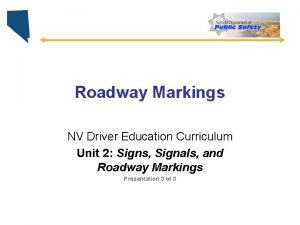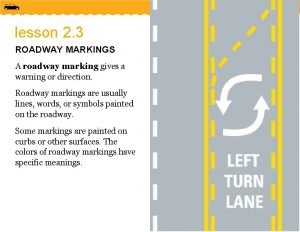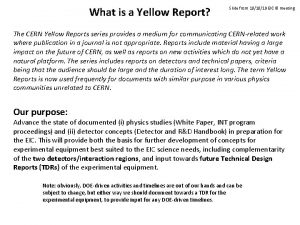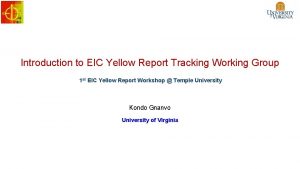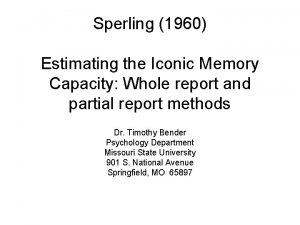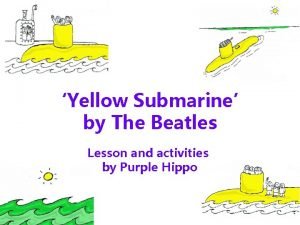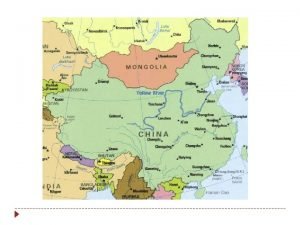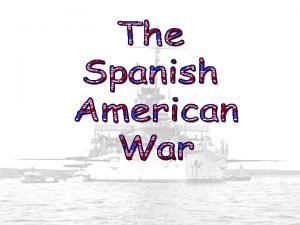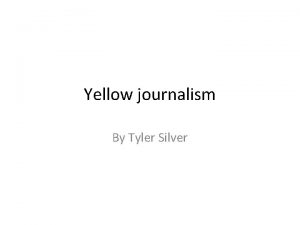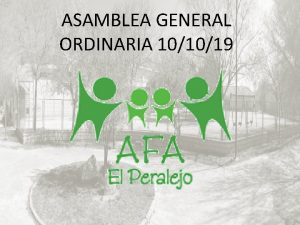What is a Yellow Report Slide from 101019










- Slides: 10

What is a Yellow Report? Slide from 10/10/19 EIC IB meeting The CERN Yellow Reports series provides a medium for communicating CERN-related work where publication in a journal is not appropriate. Reports include material having a large impact on the future of CERN, as well as reports on new activities which do not yet have a natural platform. The series includes reports on detectors and technical papers, criteria being that the audience should be large and the duration of interest long. The term Yellow Reports is now used frequently for documents with similar purpose in various physics communities unrelated to CERN. Our purpose: Advance the state of documented (i) physics studies (White Paper, INT program proceedings) and (ii) detector concepts (Detector and R&D Handbook) in preparation for the EIC. This will provide both the basis for further development of concepts for experimental equipment best suited to the EIC science needs, including complementarity of the two detectors/interaction regions, and input towards future Technical Design Reports (TDRs) of the experimental equipment. Note: obviously, DOE-driven activities and timelines are out of our hands and can be subject to change, but either way we should document towards a TDR for the experimental equipment, to provide input for any DOE-driven timelines.

Strategy Slide from 10/10/19 EIC IB meeting • Quantify physics measurements for existing or new physics topics and implications for detector design (“Physics/Detector Group”) - Go beyond physics motivation to implication for detector requirements - Physics considerations for two independent complementary detectors • Study detector concepts based on the requirements defined above, and quantify implications for the physics measurements (“Detector/Physics Group”) - Balance detector concepts versus impact on physics measurements. - Document complementarity (+ reduction of systematics) of detectors. - Fold in ancillary detectors, measurements (polarimetry, luminosity, …) - Engage EIC-detector R&D consortia • Optional: Study opportunities for accelerator physics experiments at a future EIC - Accelerator scope is to deliver EIC for nuclear/particle physics - EIC will also be unique facility that can push frontiers of accelerator S&T - Likely smaller scale, 5 -10 accelerator scientists

Approach Slide from 10/10/19 EIC IB meeting • Form physics/detector, detector/physics and accelerator physics working groups • First two will likely have 3 -4 conveners (= editors of final Reports), accelerator group likely will simply have Ferdi Willeke and Andrei Seryi as convener. • Each group has 1 Steering Committee (SC) observer that follows progress and reports the status of the effort to the SC. • The two physics/detector and detector/physics groups should have regular meetings (preferably weekly) via video conference/phone. At regular intervals (preferably monthly) both groups should have a joint meeting. • Each group (physics and detector) will need to be divided in sub-groups, with subconveners. If we have an optional third accelerator group they likely can stay as one. • Sub-groups will be defined following the analysis of the “Request of Information”. • The sub-conveners will be the people being requested to guide and document the contributions (10 -15 pages each) to the conveners for the Yellow Report(s).

Timeline 2020 2021 Slide based on 12/12/19 EIC MIT kickoff meting March 19 -21 May 22 -24 First workshop at Temple University, USA Second workshop at University of Pavia, Italy August 3 -7 Status reports of main groups at EICUGM at FIU September 17 -19 November 19 -21 Third workshop at CUA, Washington DC, USA Fourth workshop at UC Berkeley, USA January (optional) Final Meeting After assembly of Yellow Report(s), independent review team reads and comments, with final Yellow Report(s) to be released after folding in input. Goal is April 2021 (or, expedited January 2021).

EIC Detector Working Group Organization Model Physics Working Group Yellow box model will work if strong simulation team exists – needs to go well beyond current activities. Detector Working Group Simulation Team Two sub-conveners each, one concentrating on the detector technology options & link with detector consortia, the second to make direct links with simulation team & integration groups. Tracking* • Vertexing • Gaseous Particle ID One sub-convener each, with strong links to various other teams. Some activities in two faint boxes start a bit later (~1 st workshop). Central Detector Integration and magnet Forward detector/IR Integration Some further relevant ongoing activities & links with detector consortia to integrate in these efforts. IR Working Group Calorimetry (e + h) Farforward Detectors (e + h) Computing (DAQ and electronics) Background Software Ancillary Detectors Assign to Polarimetr y WG? Infrastructure & installation Complementary detectors Streaming *One additional sub-convener (to cover each of these distinct and evolving detector technologies)

Detector WG Sub-conveners System Sub-convener names Sub-convener task Convener name Tracking 1. 2. 3. (vertex) detector technologies (gaseous) detector technologies simulation, integration coordination Peter Particle Identification 1. 2. detector technologies simulation, integration coordination Silvia Calorimetry (e + h) 1. 2. detector technologies simulation, integration coordination Ken Far-forward detectors 1. 2. detector technologies Simulation, integration coordination Tanja Ancillary detectors Polarimetry WG detector technologies N/A Central detector integration and magnet 1. 2. integration tasks, field strength need, pro and con Peter, Silvia Forward detector/IR integration 1. integration tasks Tanja DAQ and Electronics 1. 2. list of activities/tasks needed Silvia Infrastructure and Installation NA yet/conveners NA yet TBD Detector Complementarity 1. NA yet Ken Simulations (shared w. Physics WG) 1. work w. both WGs central to progress

Initial Tasks for Subconveners q. List of technologies using the EIC Detector Requirements and R&D Handbook as a starting point and also include items that go beyond that q. Preparatory work for simulation exercises on “data samples” to be ready to start simulations immediately after Temple workshop q. List what integration activities are required over the next 6 -12 months, what questions remain to be answered, and to initiate integration tasks

YR Physics Working Group The Physics Working Group's aim is to quantify physics measurements for existing or new physics topics and provide implications and requirements for detector design that is studied by the Detector Working Group. The Physics Working Group is lead by four conveners and divided into various subgroups in which dedicated aspects are studied and discussed. Conveners: • Adrian Dumitru (Baruch) • Olga Evdokimov (UIC) • Andreas Metz (Temple) • Carlos Muñoz Camacho (Orsay)

Subgroups The Physics Working Group is divided in the following subgroups: • Inclusive Reactions • Conveners: Renee Fatemi (Kentucky), Nobuo Sato (JLab), Barak Schmookler (Stony Brook) • Semi-inclusive Reactions (SIDIS) • Conveners: Ralf Seidl (RIKEN), Justin Stevens (W&M), Alexey Vladimirov (Regensburg), Anselm Vossen (Duke), Bowen Xiao (CCNU, China) • Jets, Heavy Quarks • Conveners: Leticia Mendez (ORNL), Brian Page (BNL), Frank Petriello (ANL & Northwestern U. ), Ernst Sichtermann (LBL), Ivan Vitev (LANL) • Exclusive Reactions • Conveners: Raphaël Dupré (Orsay), Salvatore Fazio (BNL), Tuomas Lappi (Jyvaskyla), Barbara Pasquini (Pavia), Daria Sokhan (Glasgow) • Diffractive Reactions & Tagging • Conveners: Wim Cosyn (Florida), Or Hen (MIT), Doug Higinbotham (JLab), Spencer Klein (LBNL), Anna Stasto (PSU)

Resources q. EICUG webpage: http: //www. eicug. org/web/content/yellow-reportinitiative Ø Summary of the Yellow Report Initiative Ø Definition of the YR audience Ø Strategy and Approach Ø Meetings, Calendar, and Mailing lists Ø Material and References q. Subgroup contributors Ø Initial list compiled by WG conveners based on input from SC, labs, university groups, and R&D Consortia Ø Evolving list – needs to be updated by subconveners

